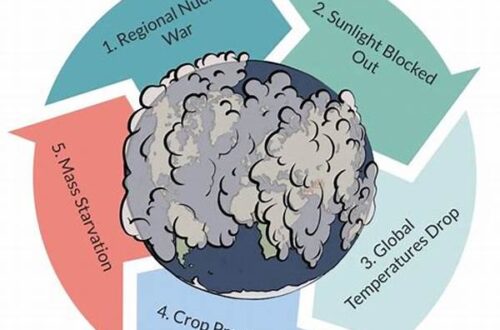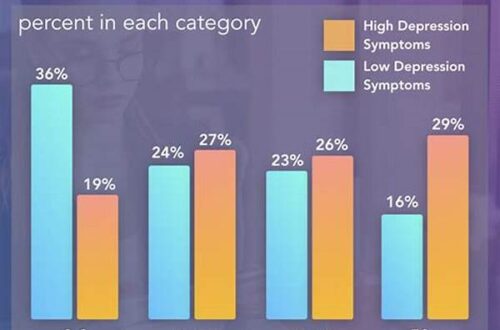Introduction to Enhanced Digital Camo Efficiency
In recent years, the development and application of digital camouflaging techniques have gained significant attention in both military and civilian sectors. Enhanced digital camo efficiency refers to the improved capability of modern camouflage patterns and technologies to better blend with various environments, providing superior concealment effectiveness. This efficiency has been achieved through advancements in computational design, material science, and the incorporation of adaptive technologies.
The evolution of enhanced digital camo efficiency can be attributed to the unprecedented integration of digital patterns tailored for different terrains. Its significance goes beyond traditional military applications, as it extends into sectors such as wildlife photography and hunting. Innovations in this field focus on creating patterns that mimic the multifaceted textures and colors found in nature, thus making detection by human or technological means significantly more challenging. The increased adaptability and versatility of these designs underline the importance of ongoing research and development in this area.
Furthermore, enhanced digital camo efficiency is not only about creating indistinct patterns but also optimizing materials for various climates and environmental conditions. This includes developing fabrics that are durable, breathable, and lightweight, providing the wearer with comfort and increased mobility. Consequently, these advances allow individuals and equipment to remain less detectable and more protected across diverse operational scenarios.
Technological Advancements in Camo Patterns
The progression of enhanced digital camo efficiency relies heavily on technological advancements. The introduction of sophisticated algorithms and machine learning facilitates the design of complex patterns that closely imitate natural settings. These technologies analyze extensive environmental data, enabling the creation of camo suited for specific geographic locations, resulting in an unmatched level of concealment effectiveness.
Enhanced digital camo efficiency also benefits from innovations in fabric technology. Modern camo materials incorporate microfibers and nanotechnology, which allow for adaptive color changes in response to external conditions. This dynamic adaptation is a crucial factor in maintaining invisibility across different environmental settings. Additionally, such technology significantly enhances the user’s survival prospects in hostile environments.
Integration of augmented reality (AR) into design processes has further propelled enhanced digital camo efficiency. AR tools enable designers to visualize and test camo patterns in realistic simulations, ensuring optimal performance before real-world application. This preemptive validation not only saves time and resources but also provides invaluable insights into potential pattern improvements.
Enhanced digital camo efficiency is supported by collaboration among multidisciplinary teams. By involving experts in ecology, material science, and computer technology, the effectiveness and applicability of digital camo are constantly improved. This synergy accelerates the development of cutting-edge solutions that cater to a wide range of operational needs.
Finally, enhanced digital camo efficiency increasingly leverages quantum computing capabilities. These advances facilitate rapid, extensive testing of pattern iterations and environmental interaction simulations, leading to accelerated innovation cycles. The insights from this process ensure that digital camo remains at the forefront of concealment technology.
Environmental Adaptability and Enhanced Camo Efficiency
Enhanced digital camo efficiency hinges on its adaptability across varying environmental contexts. The effectiveness of digital camo designs lies in their ability to seamlessly integrate into diverse landscapes, a characteristic achieved through meticulous design analysis and testing. As such, digital camouflage evolves to meet specific terrain requirements, thus providing unmatched concealment.
The patterns used in advanced digital camo feature a mix of macro and micro elements, allowing them to deceive the eye and remain effective at differing distances. This multi-scale concealment capability ensures that individuals or objects are protected against detection, whether by the naked eye or sophisticated surveillance systems. As environments change, camo patterns can be adjusted to maintain relevance, enhancing the protection and strategic advantage they provide.
Additionally, material improvements play an essential role in enhanced digital camo efficiency. Continued advancements in textile engineering ensure that fabrics used in camo production are resilient and adaptable to environmental conditions such as humidity, temperature, and UV exposure. These factors are instrumental in maintaining the integrity and effectiveness of camo patterns throughout diverse missions.
Military Applications of Enhanced Digital Camo Efficiency
The utilization of enhanced digital camo patterns within military contexts provides considerable strategic advantages. Electronic sensors integrated into uniforms represent a core aspect of these advancements, offering soldiers crucial battlefield intelligence.
Incorporation of visual deception tactics through enhanced camo leads to decreased probability of detection. Patterns tailored for specific operational environments contribute significantly to mission success.
Enhanced digital camo efficiency fosters operational flexibility. Soldiers, equipped with adaptive camo technology, are prepared for rapid environmental and tactical changes.
Infrared and thermal masking abilities of contemporary camo impel adversaries to invest more in counter-detection measures, providing a strategic benefit.
Durable materials used in advanced camo designs contribute to longevity and performance excellence, reducing the logistical burden in austere environments.
Enhanced digital camo efficiency is instrumental in modernizing military operations, ensuring that forces remain stealthy and effective against evolving threats.
The capability to seamlessly switch between different camo patterns enhances mission versatility. Utilizing wearable technology, soldiers can adapt to ever-changing environmental scenarios.
Research into bio-inspired camo incorporating organism-specific mimicry indicates promising applications for enhanced digital camo efficiency in combat.
Global military forces emphasize continuous improvement in camo technologies to sustain operational supremacy and strategic advantages.
Overall, enhanced digital camo efficiency significantly contributes to capability development, enhancing mission success, and ensuring that military forces maintain essential elements of surprise and stealth.
Challenges and Prospects in Digital Camo Advancement
Despite notable advancements, the pursuit of enhanced digital camo efficiency faces several challenges. Primary among these is the complexity of creating universally effective patterns. Diverse environmental conditions necessitate a vast array of pattern adaptations, a demand often at odds with production capabilities and timelines. Balancing these demands requires precise computational models that efficiently simulate environmental interactions.
Another considerable challenge lies in the effective integration of technology into everyday applications. While notable strides have been made in lab settings, transitioning these advancements into practical, field-ready solutions requires substantial investment in testing and refinement. Sustained international collaboration and funding are crucial to bridging this gap and facilitating the widespread adoption of digital camo technologies.
Looking ahead, the prospects for enhanced digital camo efficiency are promising. Emerging technologies continue to unlock possibilities for even greater adaptability and functionality. Artificial intelligence and advanced computational techniques promise to streamline the design and implementation of camouflage patterns, ensuring greater customization and responsiveness. Such developments are poised to redefine the perceptions and applications of digital camo, potentially expanding its scope well beyond current limitations.
Conclusion: Implications of Enhanced Digital Camo Efficiency
The implications of enhanced digital camo efficiency extend far beyond traditional military applications. Its influence permeates various sectors, including fashion, hunting, wildlife observation, and even architecture. As the design and technologies continue to evolve, the potential for personalized and environment-specific camo solutions becomes increasingly attainable.
Enhanced digital camo efficiency represents a significant leap in the understanding and application of concealment technologies. As researchers and designers push the boundaries of what’s possible, the synergy between advanced algorithms, material science, and practical application ensures that the future of camo is bright and filled with potential.
In summary, enhanced digital camo efficiency highlights the intersection of science, technology, and practical application. Its evolution demonstrates a commitment to overcoming challenges while expanding the boundaries of what is achievable. This ongoing journey of innovation promises to redefine the landscape of digital camo, enhancing its applicability across a multitude of contexts and ensuring a future where invisibility is not a mere aspiration but a tangible reality.





